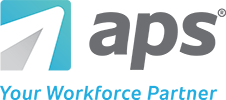Do Nonprofits Pay Payroll Taxes for Employees?
While some nonprofits are tax-exempt, they still have to pay payroll tax. But which payroll taxes are 501(c)(3) nonprofit organizations responsible for? Find out!
Read APS' Featured Blog
Switching Payroll Providers Mid-Year
Anytime is a great time to make a change, including the middle of the year. We have the resources you need to streamline your payroll conversion process.
HR and Payroll
Stay up-to-date with the latest information on best practices, trending topics, HR strategy, year-end processing, and more from APS.
Industry Insights
Explore the latest news and trends in nonprofits, churches, healthcare, hospitality, and more.
Employee Lifecycle Management
Discover ways to improve and streamline your employee lifecycle management with tips from APS on everything from hire to retire.
Request Customized Pricing
Ready to take your payroll to the next level? We’ll show you just how affordable a unified workforce management solution can be.












